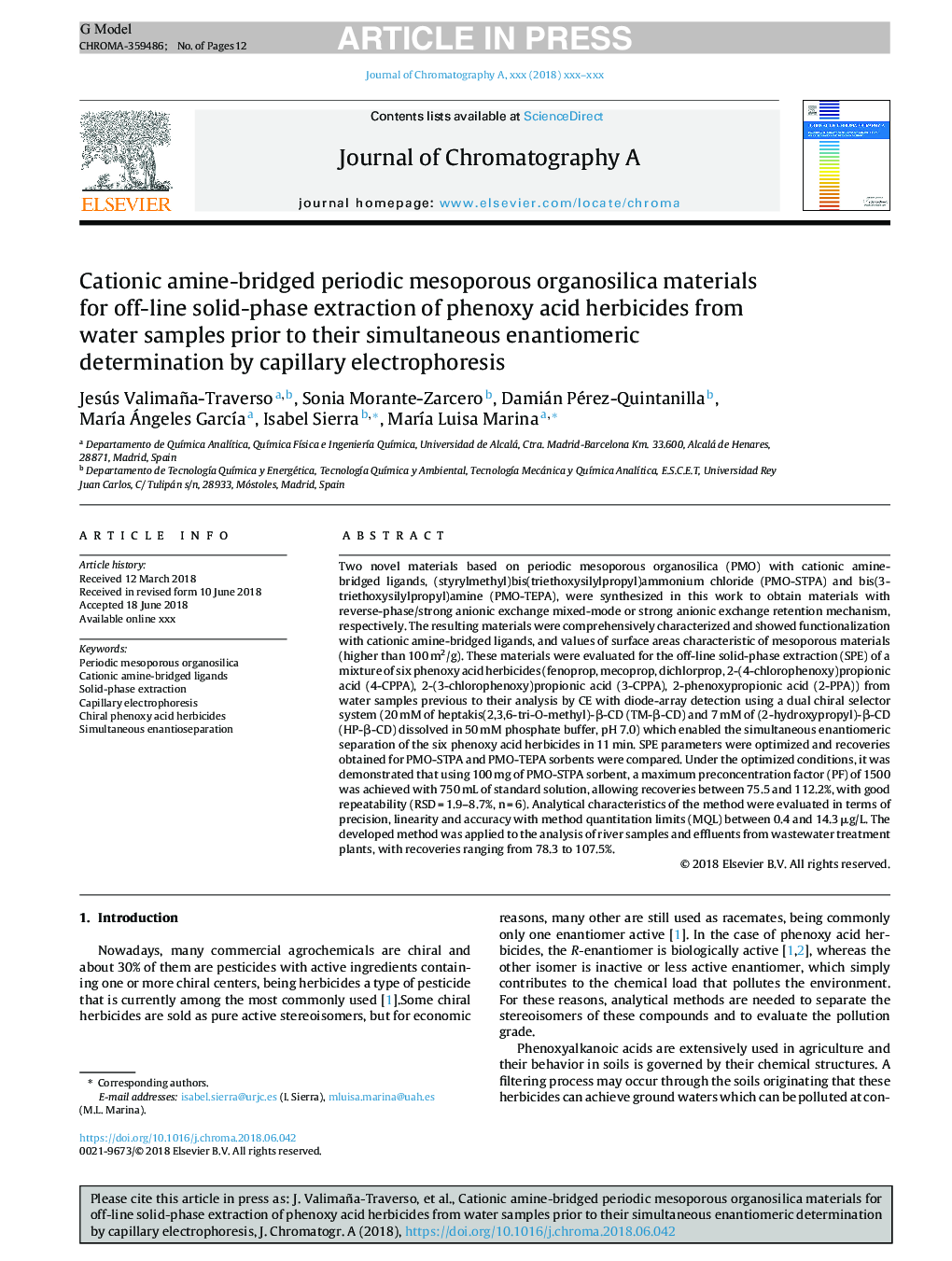| Article ID | Journal | Published Year | Pages | File Type |
|---|---|---|---|---|
| 7607522 | Journal of Chromatography A | 2018 | 12 Pages |
Abstract
Two novel materials based on periodic mesoporous organosilica (PMO) with cationic amine-bridged ligands, (styrylmethyl)bis(triethoxysilylpropyl)ammonium chloride (PMO-STPA) and bis(3-triethoxysilylpropyl)amine (PMO-TEPA), were synthesized in this work to obtain materials with reverse-phase/strong anionic exchange mixed-mode or strong anionic exchange retention mechanism, respectively. The resulting materials were comprehensively characterized and showed functionalization with cationic amine-bridged ligands, and values of surface areas characteristic of mesoporous materials (higher than 100 m2/g). These materials were evaluated for the off-line solid-phase extraction (SPE) of a mixture of six phenoxy acid herbicides (fenoprop, mecoprop, dichlorprop, 2-(4-chlorophenoxy)propionic acid (4-CPPA), 2-(3-chlorophenoxy)propionic acid (3-CPPA), 2-phenoxypropionic acid (2-PPA)) from water samples previous to their analysis by CE with diode-array detection using a dual chiral selector system (20 mM of heptakis(2,3,6-tri-O-methyl)-β-CD (TM-β-CD) and 7 mM of (2-hydroxypropyl)-β-CD (HP-β-CD) dissolved in 50 mM phosphate buffer, pH 7.0) which enabled the simultaneous enantiomeric separation of the six phenoxy acid herbicides in 11 min. SPE parameters were optimized and recoveries obtained for PMO-STPA and PMO-TEPA sorbents were compared. Under the optimized conditions, it was demonstrated that using 100 mg of PMO-STPA sorbent, a maximum preconcentration factor (PF) of 1500 was achieved with 750 mL of standard solution, allowing recoveries between 75.5 and 112.2%, with good repeatability (RSD = 1.9-8.7%, n = 6). Analytical characteristics of the method were evaluated in terms of precision, linearity and accuracy with method quantitation limits (MQL) between 0.4 and 14.3 μg/L. The developed method was applied to the analysis of river samples and effluents from wastewater treatment plants, with recoveries ranging from 78.3 to 107.5%.
Related Topics
Physical Sciences and Engineering
Chemistry
Analytical Chemistry
Authors
Jesús Valimaña-Traverso, Sonia Morante-Zarcero, Damián Pérez-Quintanilla, MarÃa Ángeles GarcÃa, Isabel Sierra, MarÃa Luisa Marina,
